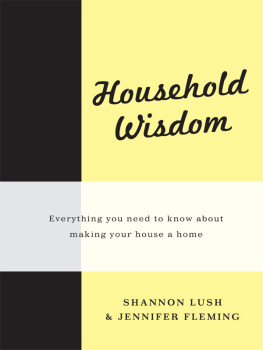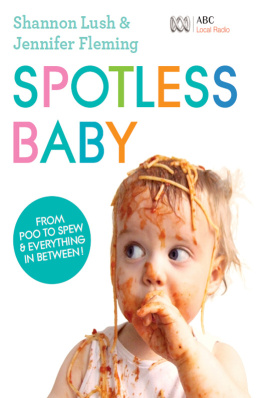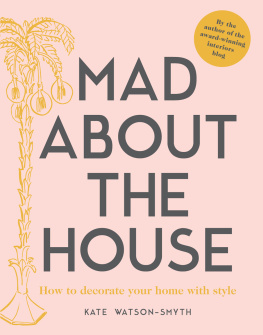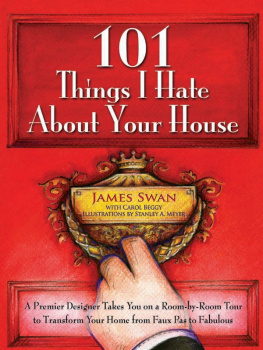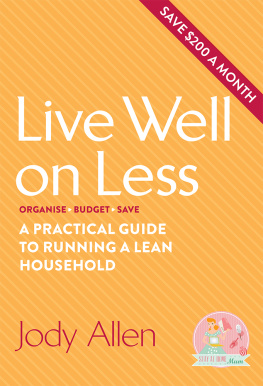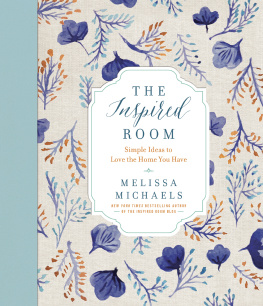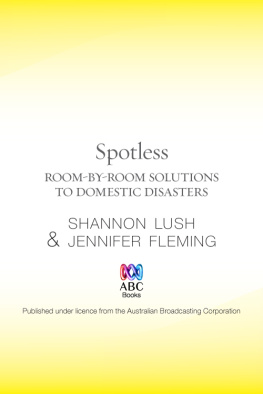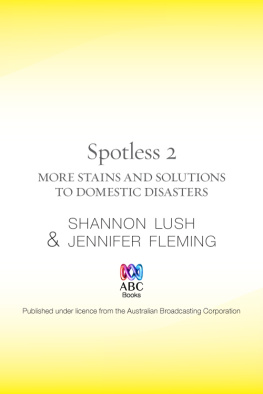Household Wisdom is the guide for modern living. It is full of clever money-, time- and planet-saving ideas to help you get the most from everyday items that you have around the house as well as affordable inspiration for making your house into a home.
Making a house into a home is about being comfortable in your surroundings and satisfying the senses: its about the look, touch, smell, sound, taste and that often elusive X factor. Its about elements like the colour of your walls, the feel of a mohair blanket, the fragrance of a bunch of flowers, the sound of your favourite music, the taste of a delicious meal, or the feeling of warmth from a crackling fire on a cold evening. This book will help you hone your senses and use your time more creatively to create a haven for you and your family.
Do you have a drawer in your home filled with old gift wrapping paper, bits of ribbon and other things you might be able to reuse? Do you have a shelf where old jars and plastic containers are kept? In days gone by everyone had areas in the home stocked with items to reuse: old coffee jars became containers for nails and screws; fraying business shirts were turned into patchwork quilts; and old shoe boxes became storage units. Reuse was very common. Today items are cheaper to buy and easy to throw away so we dont tend to hang on to them. We dont bother to reuse takeaway containers or old yoghurt tubs. When we get a new pair of sunglasses, we dont think to turn the old sturdy case into a box for jewellery. Without thinking too much about it, after we use something we throw it into the bin. It ends up in landfill and we end up having to buy something else to replace it. And heres the biggest sting: youre paying for it because all that packaging costs money! We want you to save money, save time and, in the process, help save the planet all without losing your lifestyle.
This handy reference book takes you on a room-by-room tour through your home and contains a range of traditional and contemporary tips and techniques for getting your home in order. It encourages you to create a rag bag (where old clothes and fabric can be stored to use for cleaning or mending); start a busy box of odds and ends (such as broken ceramics, magazines and patchwork fabric for crafts); and begin a lumber pile (where old timber is stacked and stored for other uses). Some suggestions will take only a couple of minutes; others will require more time and ability. Some ideas will seem a bit over the top; others will seem obvious.
Today theres a new imperative to being less wasteful: the future of the planet. Our first-world lifestyle is comfortable and enjoyable but its also choking us, literally Australia has one of the highest asthma rates in the world. In some countries, people with heart and lung problems are finding it more difficult to breathe because of smog from cars and coal-fired power stations. There are threats to the Great Barrier Reef and the Murray-Darling river system. Even the Vatican is worried, nominating polluting as a new social sin!
Shannon and Jennifer remember how things were done in the more thrifty and resourceful not-so-distant past. As one of five children, Shannon recalls the family bin was never filled to the top. Instead, items were used up, paper bags were saved and rubber bands were never thrown away. There was less packaging, more composting and a spirit of make do and mend. Going to the tip was an adventure as you searched for treasure among the trash. Now, shes horrified at what people throw away in the council clean-up.
While Jennifer is from Generation X, her parents are products of what she describes as Generation Frugal, the post-war generation when everything was scarce. One grandfather kept old leather boots in the shed to turn into tap washers. The other, a builder, had a slogan: Dont damage and dont waste. Her dad uses old jars to store nails and screws. One of her mums favourite mantras is Do you really need it?, which she thinks todays teenagers should be able to download onto their mobile phones before making yet another purchase.
During the writing of this book, Shannon decided to reuse all the recyclable material that came into her home. She turned old plastic bags into knitted coat-hanger covers, a crocheted hat and a hooked welcome mat, and found many uses for excess cardboard, tins and paper. Even though she has always been a careful recycler, the act of consciously finding new uses for old items really opened her eyes to just how much recyclable material goes into that yellow bin. If Shannon, with her incredibly busy schedule, can drop her recycling to nil for six weeks, surely we could all drop our recycling by 10 per cent without impacting on our lifestyle.
We hope this book will inspire you to hunt around in second-hand stores and give old or preloved furniture a new lease of life. The quality and character is often much better than that of brand-new items and they are often much cheaper. If you cant find a use for something, donate it to charity or give it away to friends or family. We want you to reduce your electricity bill: the lower your bill, the lower your carbon emissions. Do you turn out the bedroom light when youre in the lounge room? Do you leave your appliances on standby when they are not in use? Are there any dripping taps in or around your house? By making small changes, you will save money and youll be helping the planet at the same time.
We know some of you will be thinking: I dont have the space, what about all that clutter? And, yes, this can be a challenge if you hang on to everything without having an organisation system in place. Not all clutter is bad but it must be ordered so when you need a particular item you can put your hands on it straight away. Storage varies from home to home and some of you will be able to store more than others. Designate a drawer in the kitchen for odds and ends. Use a shelf in the linen press. Create hanging systems behind bedroom doors and in cupboards. Add hooks to the sides of cupboards, wardrobes or backs of doors. Construct shelves in laundries, sheds and garages. Use space under floors or inside the roof. Remember: you control the clutter, the clutter doesnt control you. If you dont have a lot of space, donate and recycle.
You might find your first days of downshifting a bit odd. And lets face it, its hard to change longstanding habits and go against the consumerist grain. But over time, using old jars to make preserves, turning the last bit of toothpaste into a stain remover and making your own playdough for the children will feel normal and good and fun. Buck the trend and become part of a new community that saves, reuses and recycles.
We dont expect you to try all of the suggestions in this book. Our hope is that youll be encouraged and inspired to think differently about items you throw away and about the volume of goods you consume.
WHERE TO BEGIN
Whether the design of your home is open plan or traditional, you need to think about how it feels and looks, and also about how it operates. Theres no point in having a stunning-looking home thats impractical.
But before you rush out and buy paint or move furniture around, think about what happens in different rooms in your home. What is their function? If your dining table is also where homework is done, factor that in. Think about how the air flows, how much natural light there is and the mood you want to create. If youre not happy with a room, take some graph paper and sketch how the room can be arranged or rearranged to its best advantage.
HOW TO SELECT ITEMS
Household Wisdom also offers advice on how to select items for your home, from towels to tables, fridges to fans, pillows to pots. It looks at how to arrange them, care for them and fix them. There are also lots of economical tips to improve items, from reupholstering a scratchy couch to re-grouting your tiles. Theres plenty of do-it-yourself and craft for those who are so inclined.

